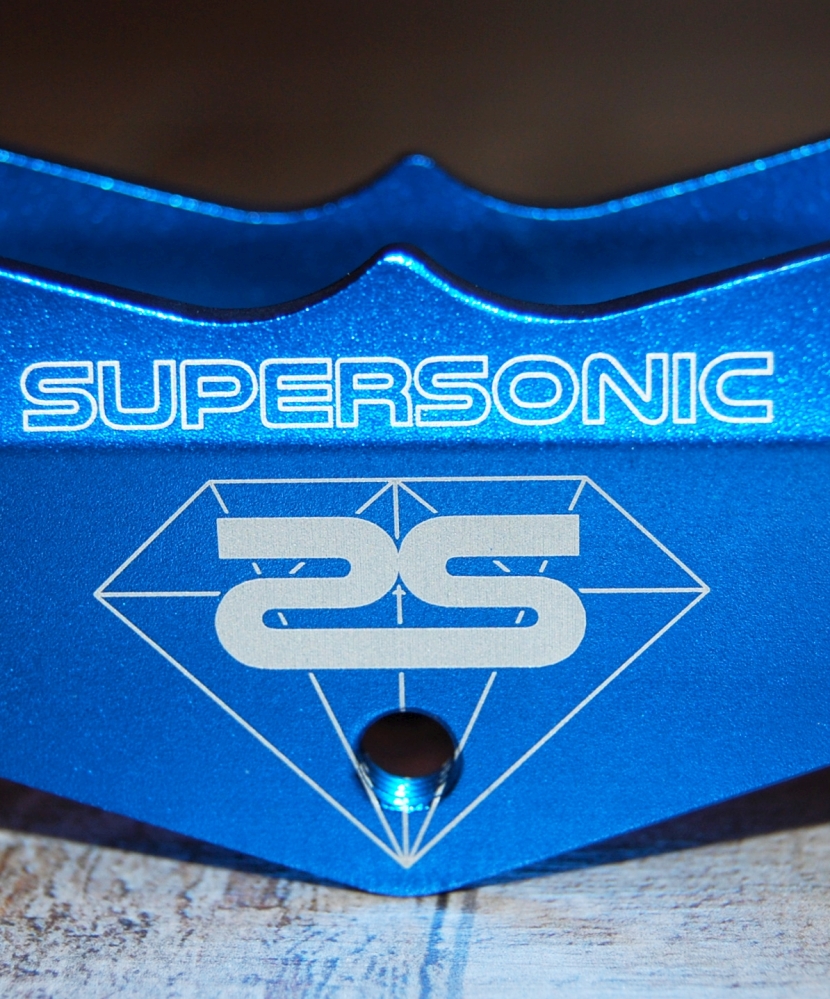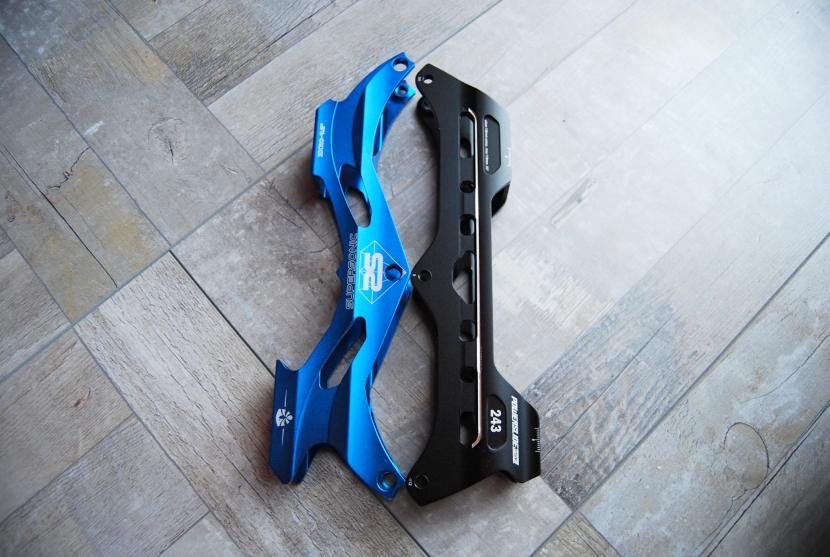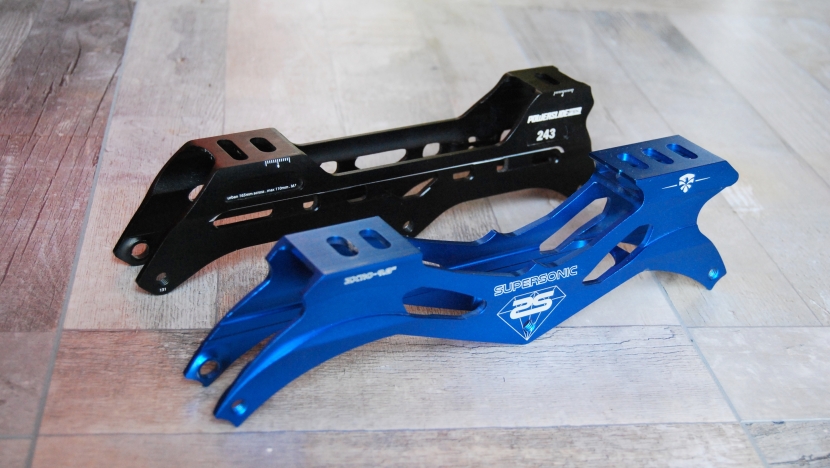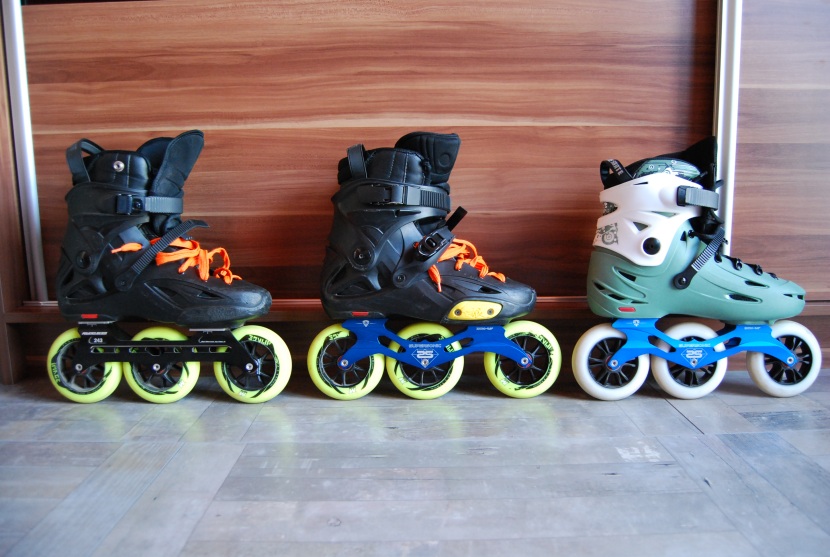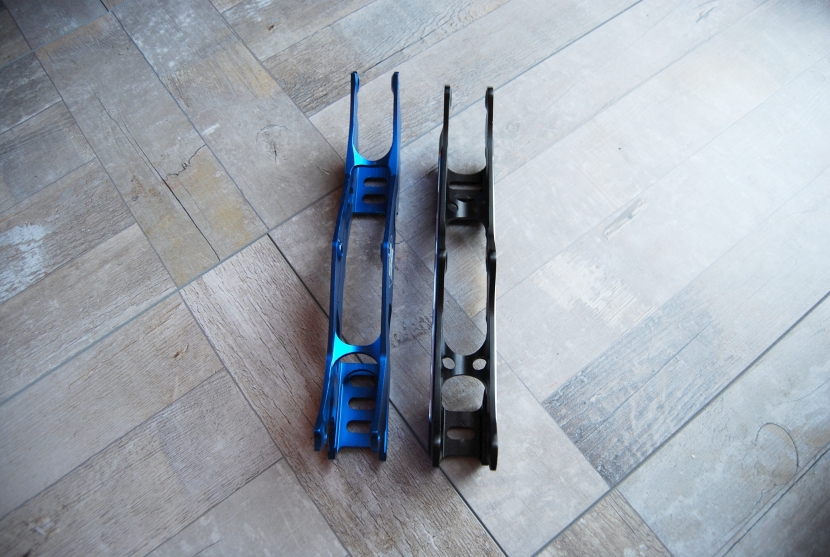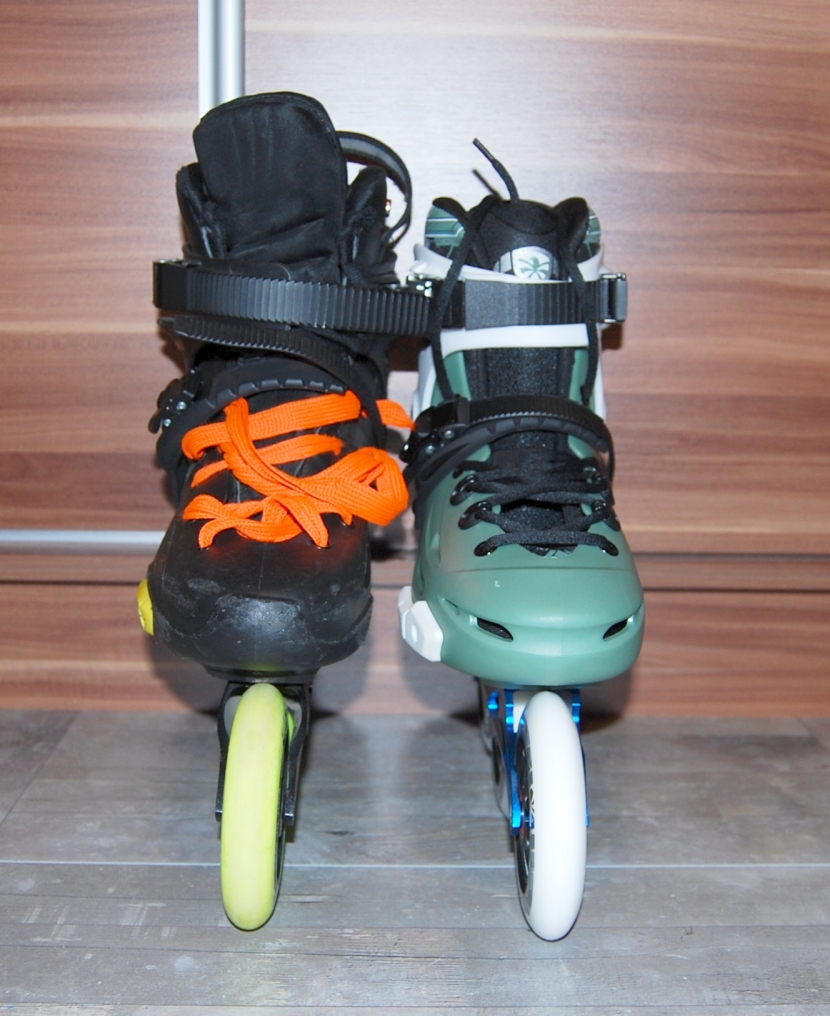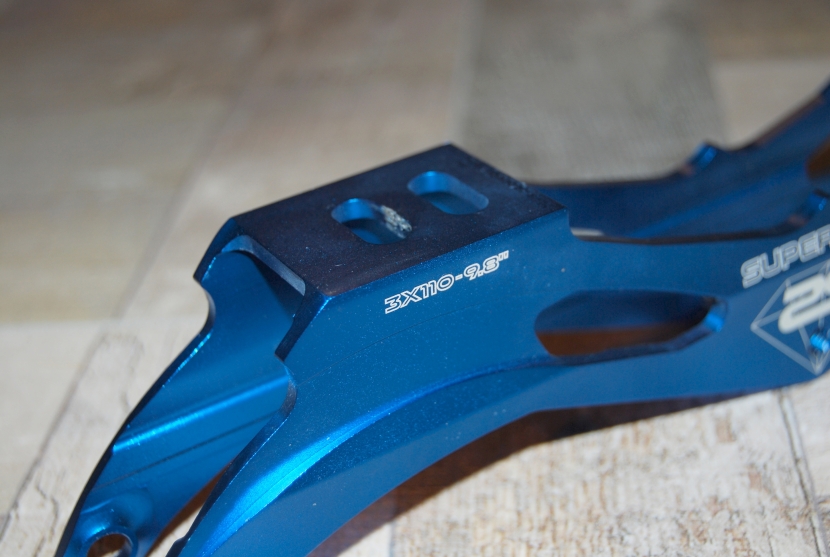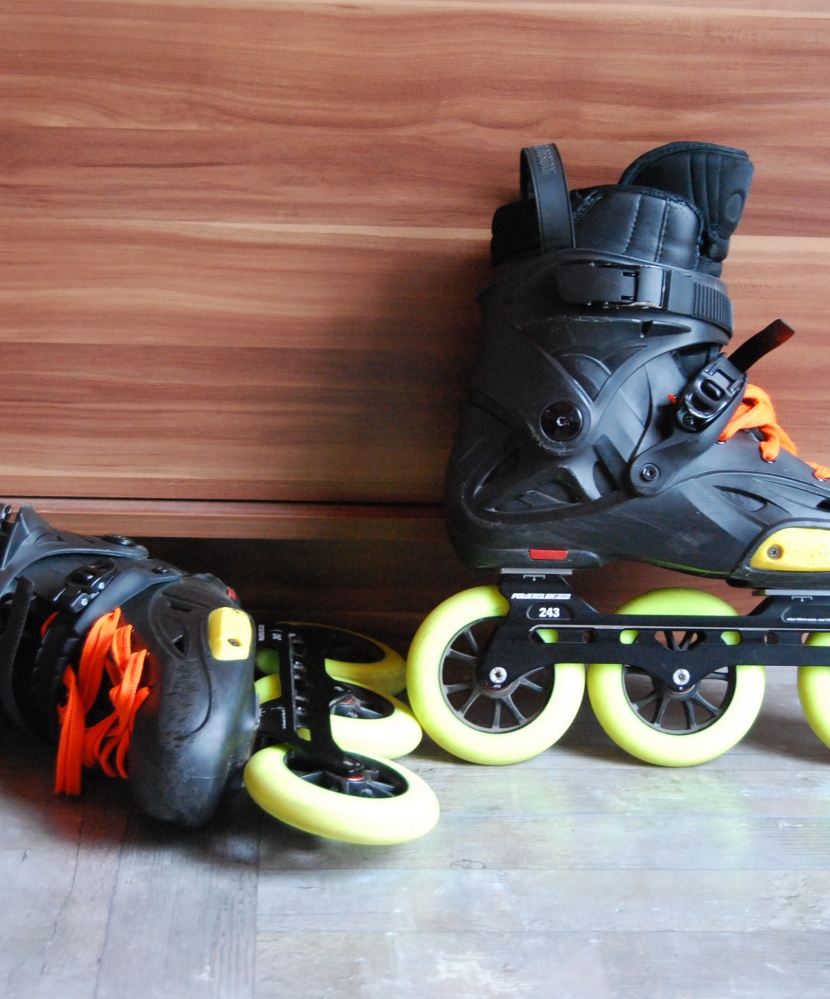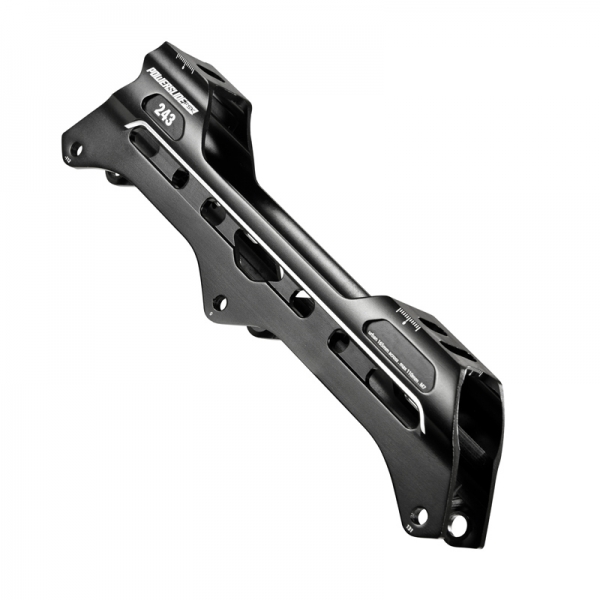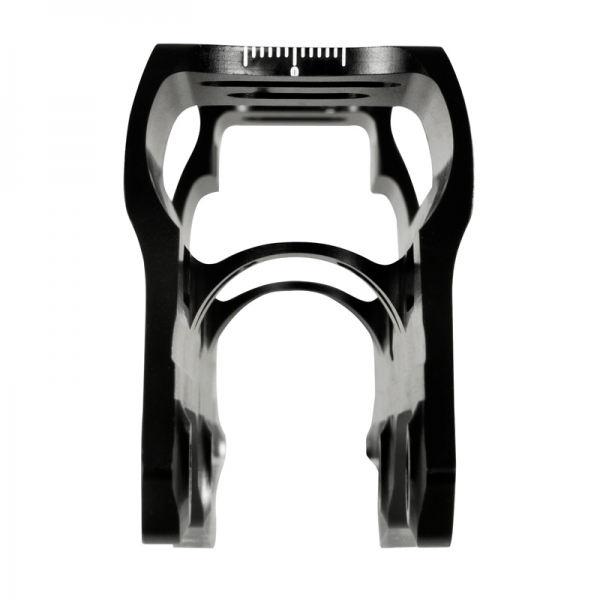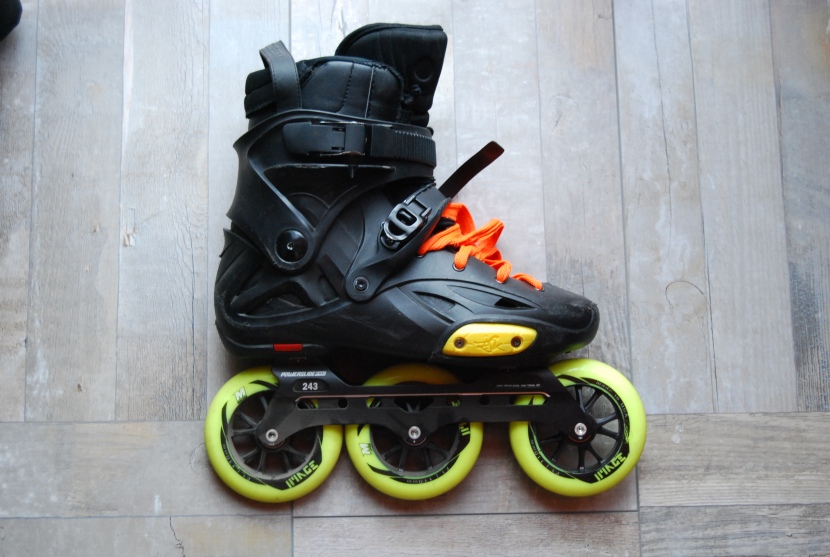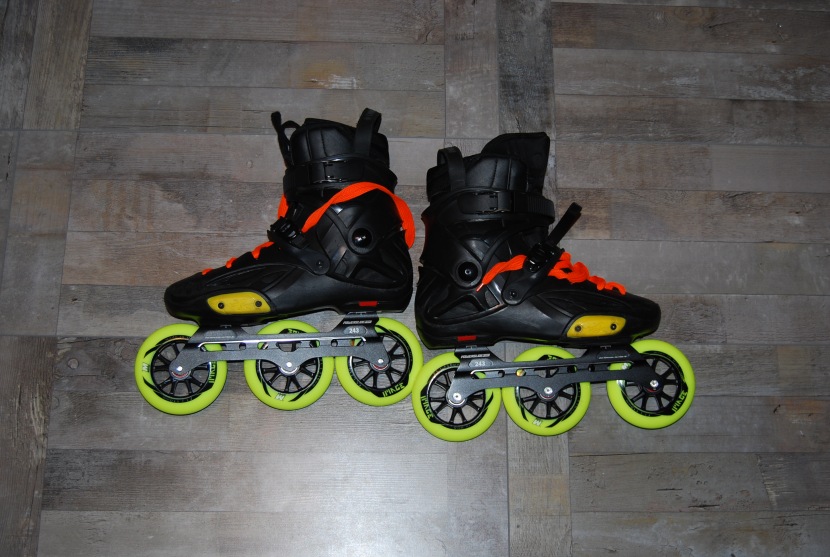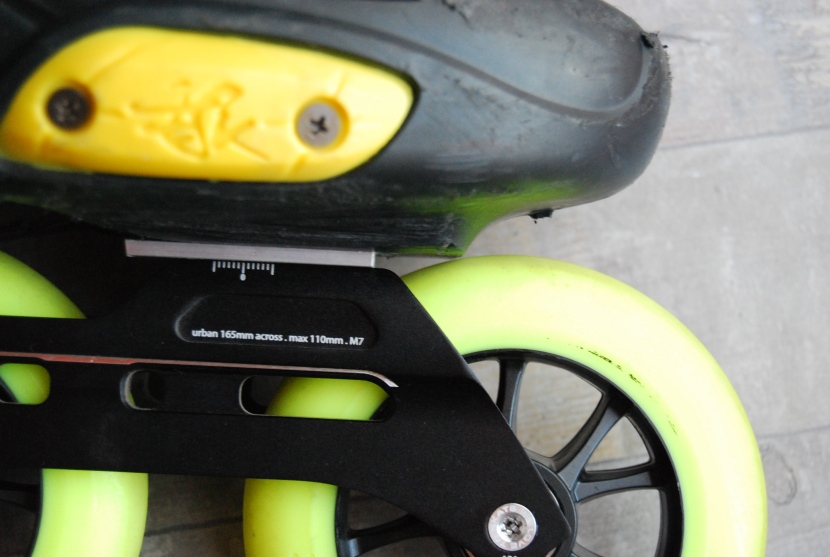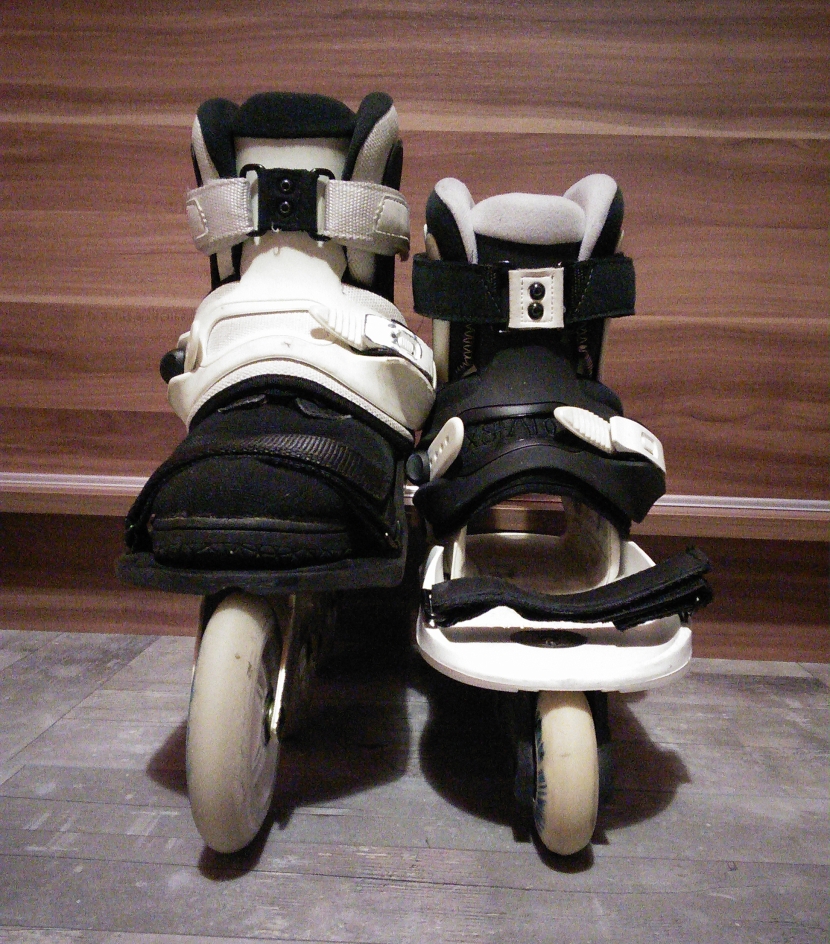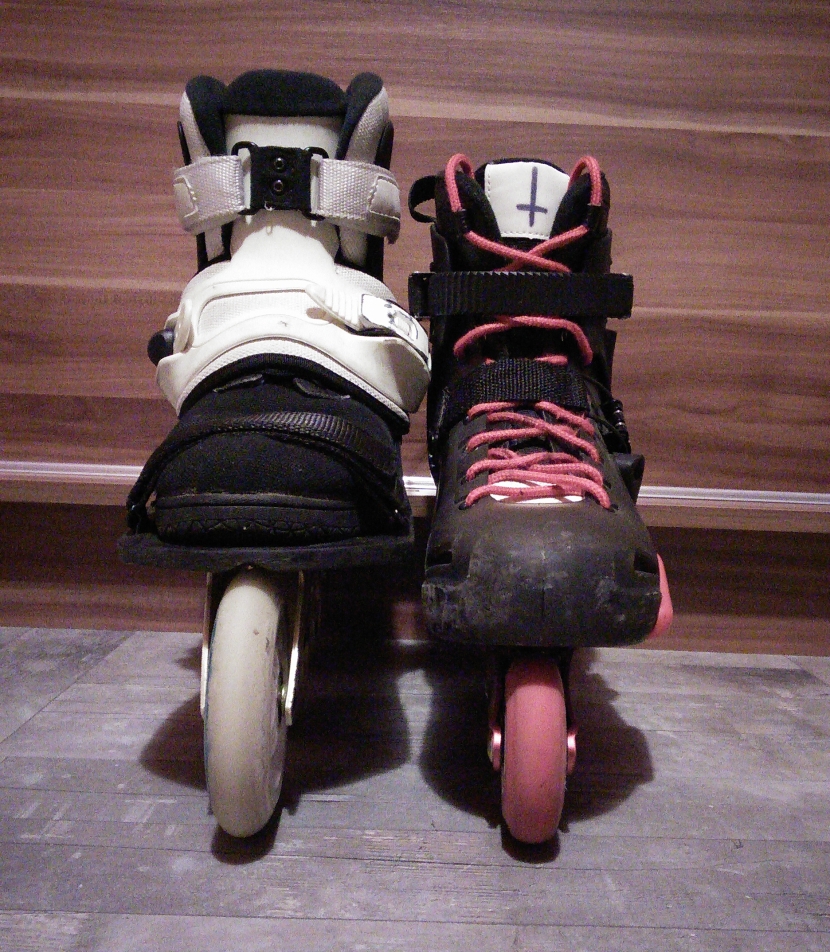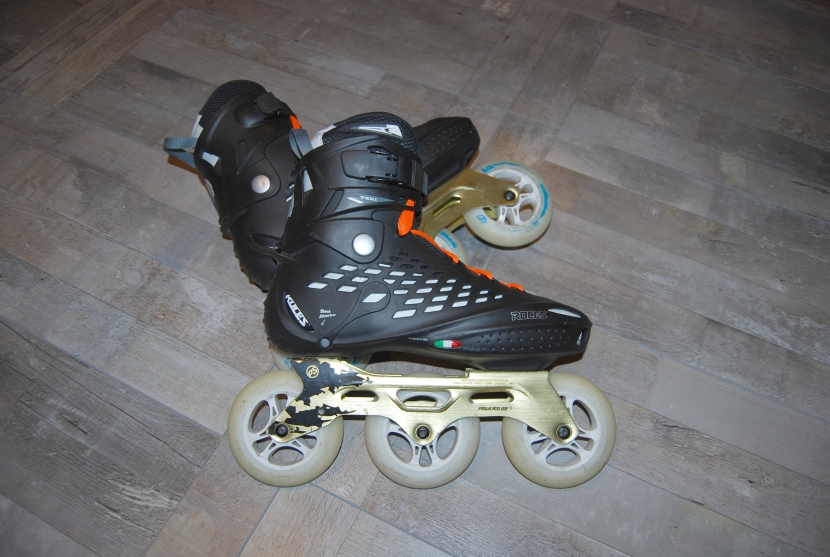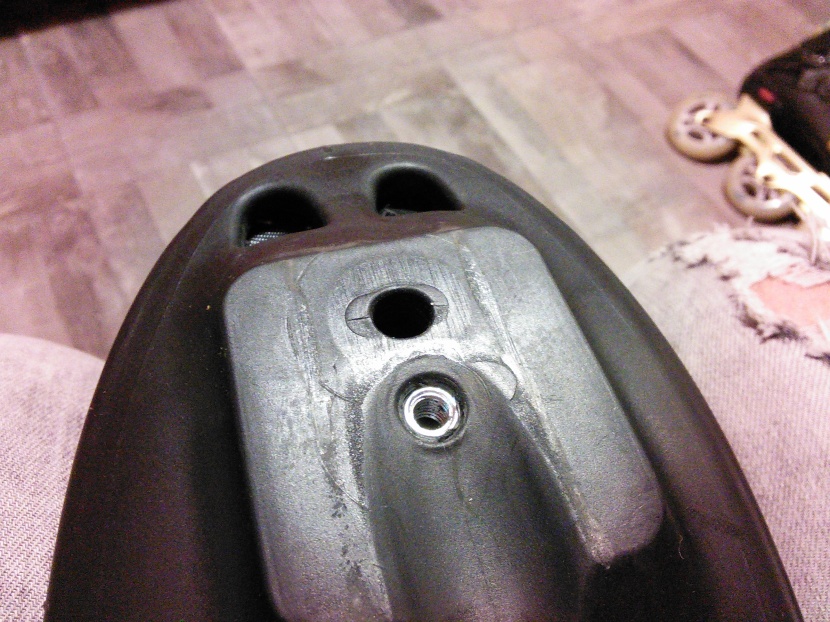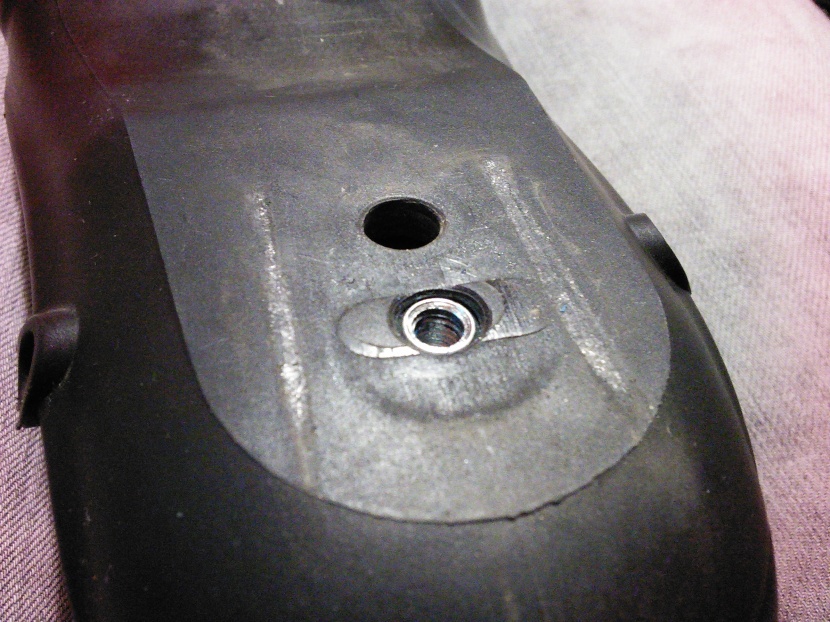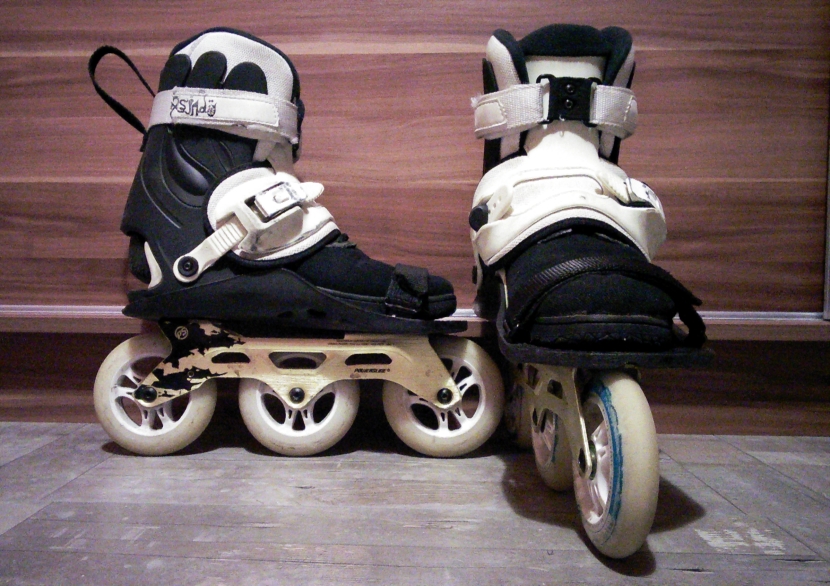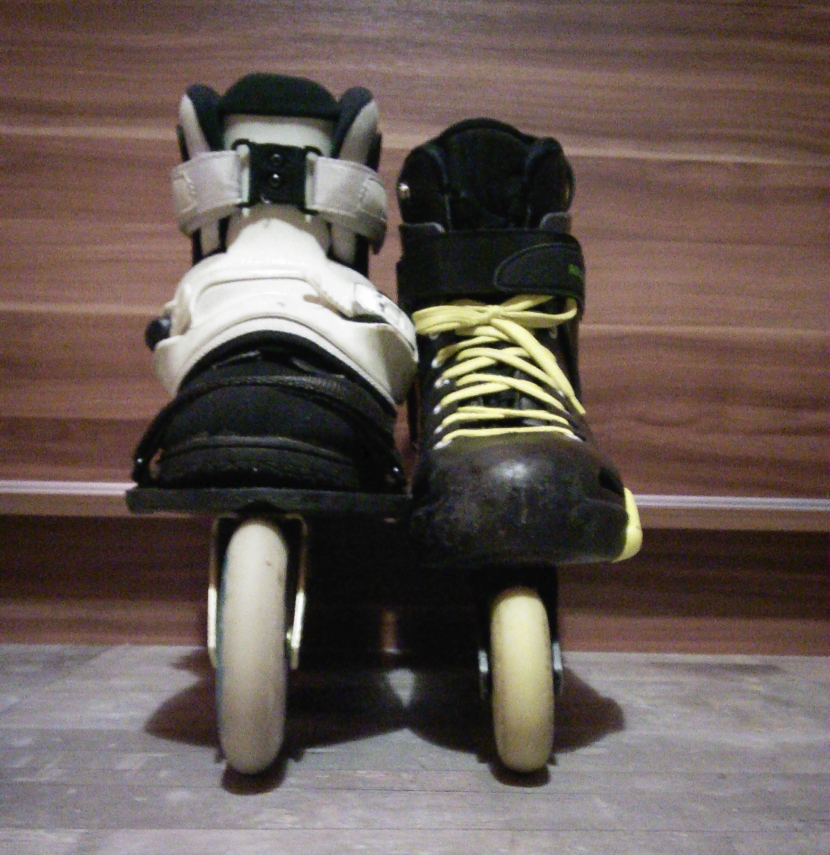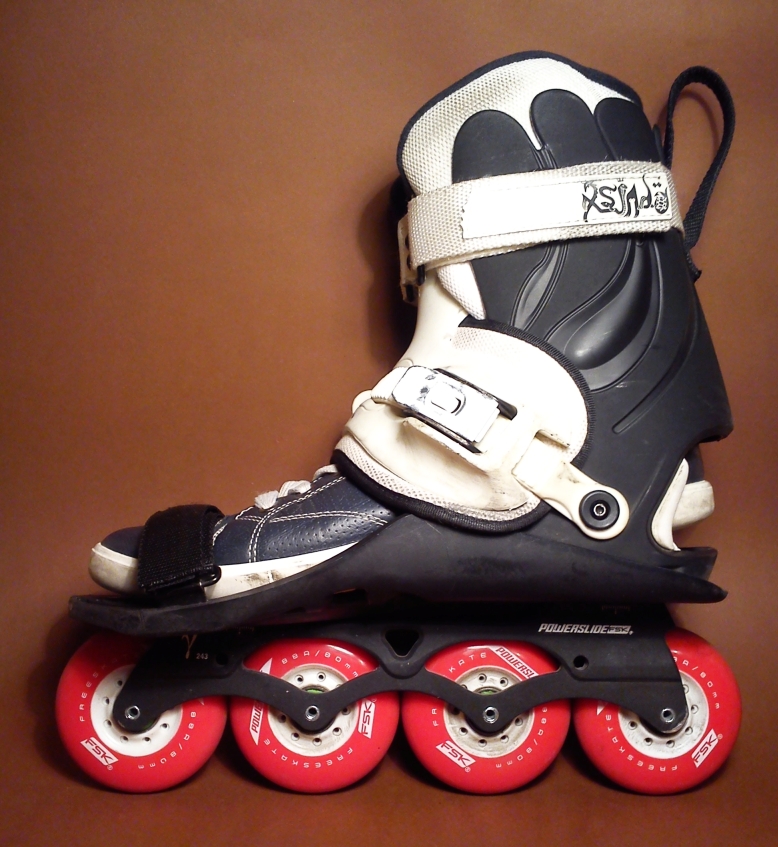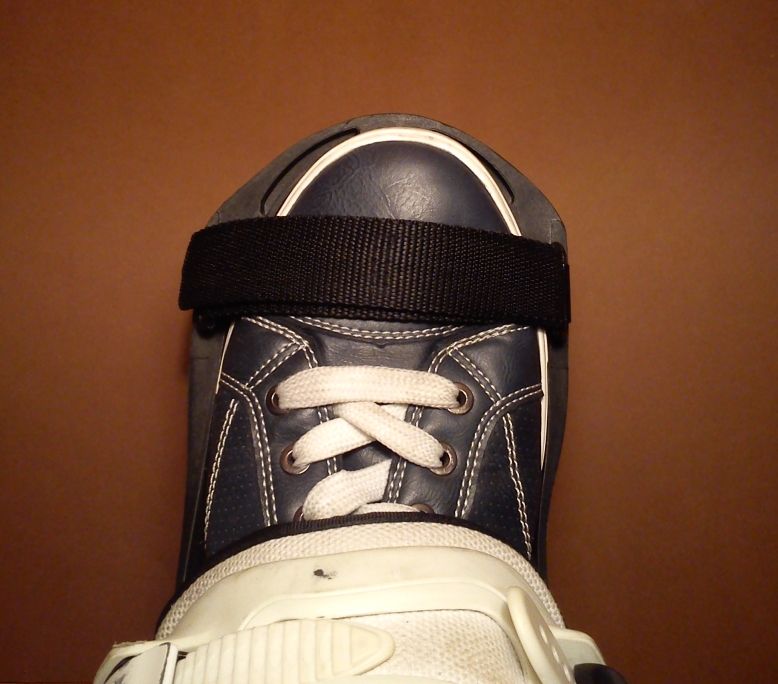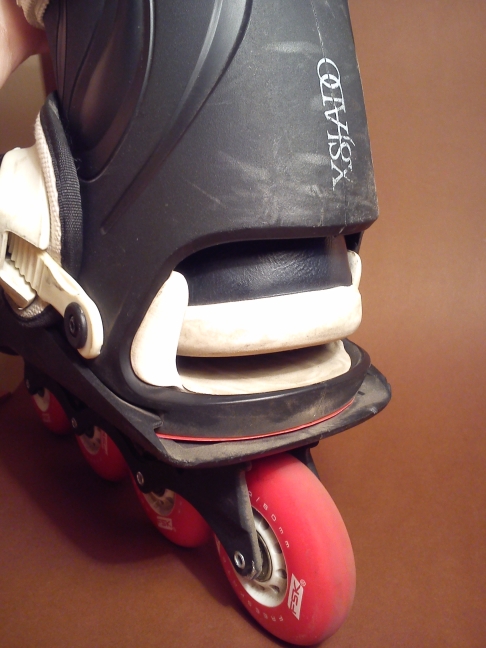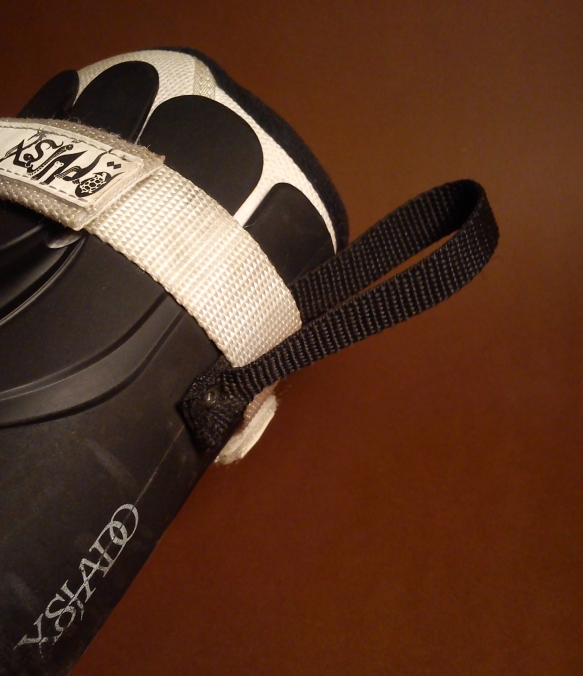
Trinity system – incoming revolution
A few weeks ago I had a chance to participate in two-day meeting with one of Powerslide central representatives. Well, I was present only for one day, because of my job, but what a day it was. Whole thing took place in Warsaw and goal was to test and give feedback about PS products planned for release in season 2016. A lot of people were there, some of them are PS representatives or skaters, others without any brand affiliation, one was supported by Seba. Our group was very diverse – there were aggressive skaters, freeskaters and people who specialize in freestyle slalom and/or slides.
We had two big boxes of stuff to play with, but main dish were prototypes of new Tau skates. We also had a chance to try earlier prototype of a Kaze model, used for a few months by Piotr Combrzyński (one of best aggressive skaters in Poland). Both boots are equipped with new “Trinity” frame mount this text will focus on.
Apart from boots, we had a lot of frames to check. 4x80mm, 4x84mm, 3x90mm, 3x100mm, 3x110mm and 3x125mm options were available to use with new line of Undercover wheels. We had spent almost as much time switching framesets and boots as skating them.
I can say without exaggeration that we all were under huge impression of new Trinity tech from Powerslide. Me and one of colleagues came up with a conclusion that after trying how it works, we don’t really want to be back on skates with SSM and LSM frame mounting systems. Those, literally, don’t have any advantage over Trinity!
So, what actually is Trinity system? As you should guess by now, it is a new frame mounting system – and one designed to make setup height as low as possible. How Powerslide managed to achieve such goal? It is very simple – instead of single front mounting bolt placed directly over wheels, here we have two of them on the sides.
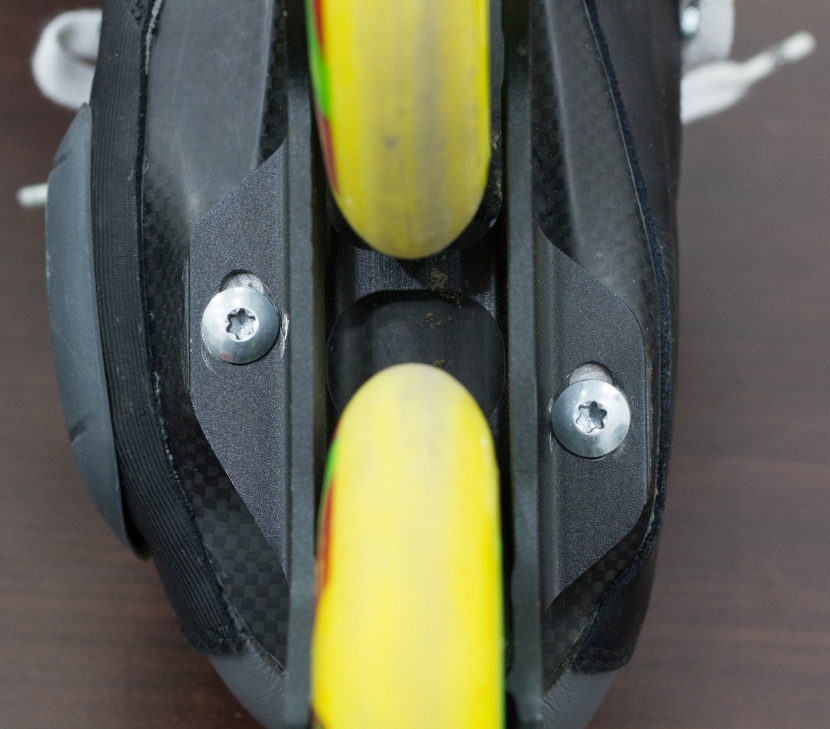
It creates an opportunity to make frames lower, as there is no need for raised mounting block in front of the skates, no problems with bolt placement going in the way of the front/second wheel etc. It also fixes the problem with centering of the frame under the boot in cases of 3×110 and 3x125mm framesets coupled with some boot sizes.

What are other advantages of Trinity over SSM/LSM?
- Lowest setup height possible – while that’s true there are some specific cases where Trinity won’t make any/much of difference, like long speedskating 3x125mm frames for example, there aren’t many of them. It works wonders with roughly 90% of usual setups you’d want to put under your feet. With 4x80mm frame you get a sensation of skating something more akin to aggressive skates (in terms of height, not speed!) than freeskates. When I’ve put on skates equipped with short 3x125mm frames and corresponding wheels, I wasn’t aware I was on something larger than 3×110 until a friend told me (wheels were some generic/prototype ones, with core similar to used in many 110mm wheels so I’ve overlooked their size).

I bet that Trinity mount will make largest impact on speedskating, making 3x125mm setups more accessible for skaters with smaller body frame and feet. It makes such setup much easier to handle, so argument that 125mm wheels benefit only large and strong skaters is gone. In freeskating side of things we are facing a small revolution. Out of sudden 90-100mm setups are more manageable for average skater and even in cases of smaller wheels, lowered centre of gravity is a welcome change. - Improved energy transfer – with three points instead of two, frame-boot connection is more stable and solid. The frame doesn’t flex as much around bolts during strong pushes, making it easier to accelerate and to skate faster. Frame structure itself feels more rigid – it is, after all, held in place with two bolts at the front, with underside of the boot making an arch over it, reinforcing whole setup further.
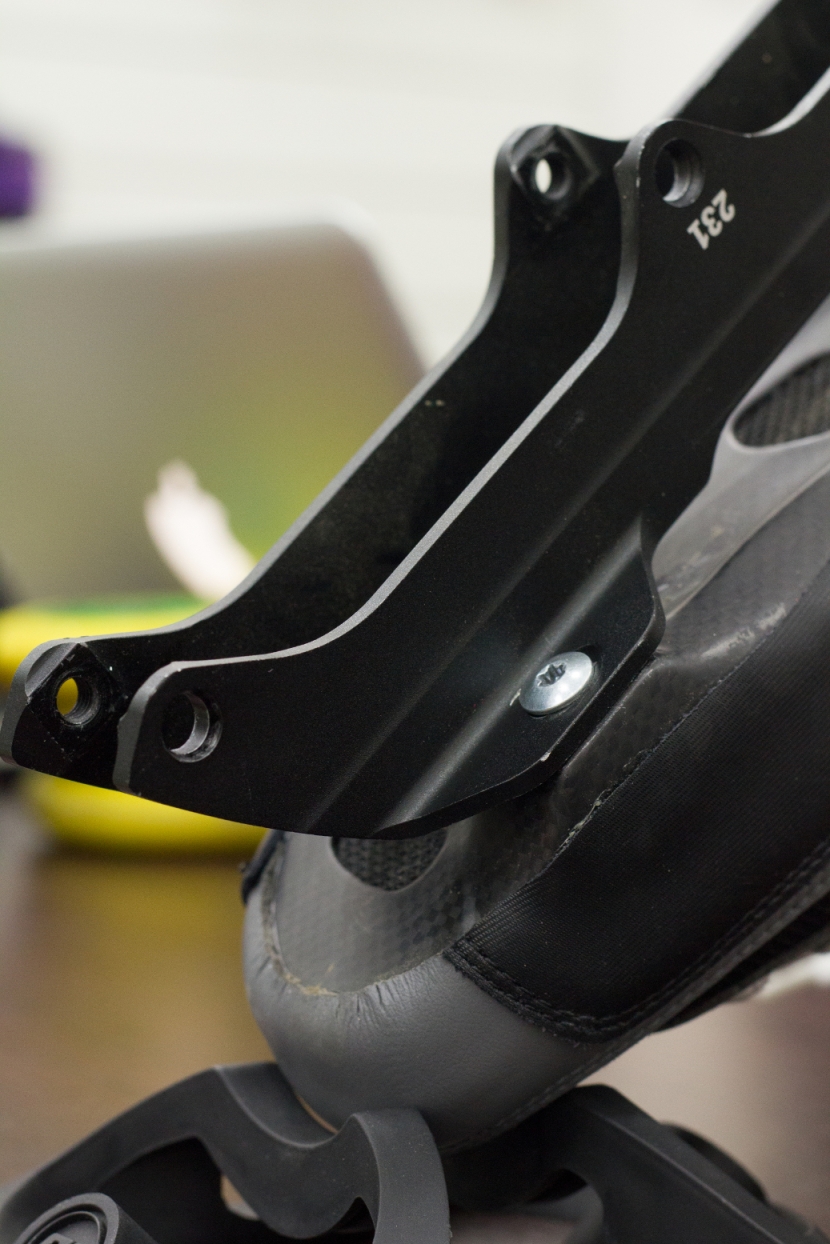
- Versatility – think of UFS for non-aggressive skates, but with much better execution. Every frame using Trinity system will fit every boot! There is no need for two standards like in case of SSM and LSM – because there is no need to design the frames around front bolt placement. It also does mean that it’s always possible to centre the frame under the boot properly, without front or rear wheel sticking out too much from the underside. You can use speedskating frame with a freestyle boot like Kaze without any problems. I’ve even tried prototype of a hockey boot with a 3x125mm frame!!!

- Better vibration dampening – no joke, boots feel much “smoother” when skating, because of forces and shocks being distributed more evenly on surface of boot sole, thanks to three contact points instead of two. It’s only minor bonus, but with new generation of one-piece boots that are designed to be usable without additional insole, it’s a good thing.
If you are worried about frames availability in the future, please don’t. Powerslide is treating this whole thing seriously and will provide numerous options, from 4x76mm wheel frames up to 3x125mm ones. I even had a chance to skate 3x90mm frame of 220mm length – afaik nobody has released something similar before.

Skates we’ve got a chance to try are not final versions and a lot can change until their release, but I’ll give you some insight – about Kaze and Tau at least, hockey boot is still at early stage of development and to be honest I’m not very qualified to judge how hockey boot performs.
Kaze seems like a worthy successor of current Ultron design – universal skate based on one-piece boot with composite shell, suitable for freeskating and freestyle slalom. Lining, foams and upper skin are pretty stiff and hold foot in place well. The skate worked for me perfectly in size EU42 after removing insole (I normally skate EU43), was comfortable and efficient – fast and responsive, as you want freeskating boot to be. As it will be based on composite shell (with addition of glass fiber to reinforce it) its price should be lower than of Tau. Only thing I’ve disliked was a bit too soft tongue and too much forward flex caused by this – I like tongues like in Phoenix liners, which are more supportive and do a very good job in locking heel down. But, on the other hand, a better forward flex allows you to go lower on skates, making possible to squeeze more speed out of big wheeled setups. Boot is reasonably light, not the lightest skate you can find, but remember it is based on composite shell, not a carbon one!
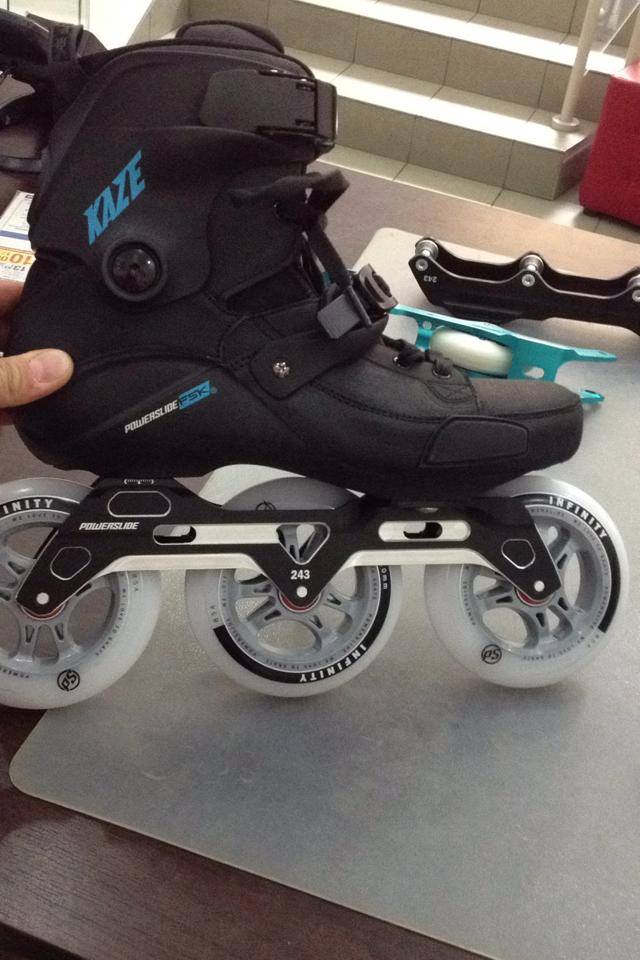
I think Kaze have a potential to become a very popular choice if Powerslide will back it up with good promotional campaign, read: don’t just release it on the market and expect people to buy it without explaining advantages and idea behind it, like in case of horribly under-promoted and underrated Ultrons many people believe to be not-that-cheaper alternative to freestyle Hardcore Evo (while they are more of a Carbon Free remade to be urban/freeskate).
Main dish prepared for 2016 (hopefully!) is named Tau, though. This boot uses latest and best technologies available to Powerslide and it shows. Apart from Trinity frame mounting system, it does have new pain-free shell (read: shell is cut out in places when pressure points issues surface often) made out of compressed carbon (not “simple” laminate). It makes skate base lighter than one made of traditional carbon freestyle boot, like Hardcore Evo for example, without losing rigidity. Skate itself is very light and fits like a glove – responsiveness and energy transfer are excellent and it’s almost impossible to skate slow in these. You can really feel you have sophisticated sports equipment under your feet, not some toys.

Tau prototypes were not perfect, though and require some tinkering in ankle area to provide better comfort. Still, Tau are already bursting with potential – it was the skate I’ve liked the most out of all new boots I got a chance to skate that day, even though it was two sizes too small (EU41) and even without insole it was making my toes a bit numb. Wider style toe-box is more similar to ones in skates like PS Ultron, USD Carbon or Seba SX than to the one in Hardcore Evo and it for sure helped a lot – with narrow one I probably wouldn’t be able to skate EU41 Tau at all.
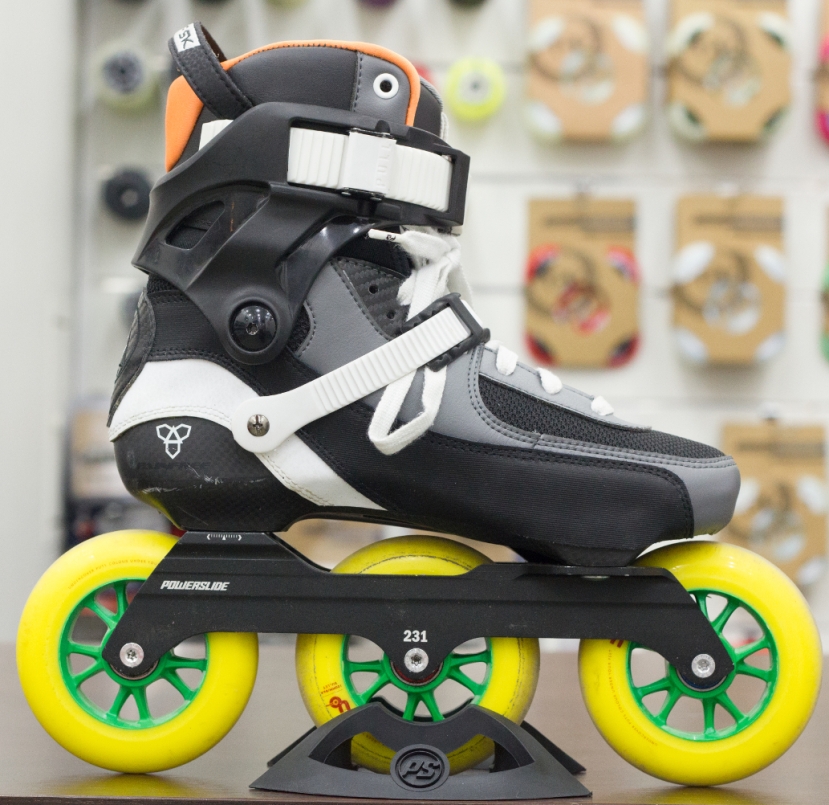
Apart from three new boots based on new Trinity standard, Powerslide is planning to release fourth, designed to be semi-race/marathon skate. I’m sure they will eventually release a proper speedskating boot too, as it would be foolish to not to. To be honest, if I would be in charge, I would try to introduce Trinity anywhere it’s possible, as older SSM/LSM standards do not have any advantage over it. It is a “gamechanger” or you might say a “killer feature” that competition won’t be able to match anytime soon. Coming up with another solution to lower setup height without copying PS invention will be a very difficult task.
There aren’t any major disadvantages, but if you are picky, you can see two (very) minor ones. The boots do have something similar to X-Slot (it is reversed here, though – frames have holes for longitudinal position adjustment and small movable plates in boots are used for lateral fine-tuning) but you don’t have as much freedom in adjusting frame to the sides. Still, it is much better than in case of UFS standard, with fixed frame position, which I grew used to over the years.
Second „problem” is a fact you will be limited to Powerslide frames only. But, to be honest – how often were you replacing frames on boots with SSM mounting with ones made by different manufacturer? Consider that SSM is a very loose standard anyway and not always everything works properly. It’s hard to find an after-market frame that would be centred correctly under Rollerblade Tiwster of Seba WFSC boots, for example, and even when using the same manufacturers boots and frames (not designed for the boots specifically) you don’t have 100% guarantee that everything will go smoothly, just as my test of PS Pleasure Tools and FE Supersonic proved… Every Trinity system frame I got a chance to try was made of high-grade aluminium and had great finish and there will be plenty of options to choose from, so I’m not really worried. And every single one of them fits correctly on boots.


I know this text reads like and advertisement, because I’m praising the whole thing so much. It couldn’t be any different, though, because Trinity is probably the freshest and most exciting invention introduced in inline skating for years – it redefines how many setups skate (for example it makes 3x125mm option truly viable for urban skating, when I’ve felt previous solutions were way too sketchy) and fixes long known problems of frame height and placement that were present in SSM/LSM mounting standards.
It’s hard not to be excited! I knew about whole thing since start of 2015 when first leaks from ISPO were to be found on Instagram and had lukewarm feelings towards it at best, but trying is believing.
I literally can’t wait to get my own pair of skates with Trinity system and will try to snatch one ASAP, and if you are planning to buy high-end freeskates in 2016 I’d say wait for the release of Kaze or Tau – it’s worth to do so.


